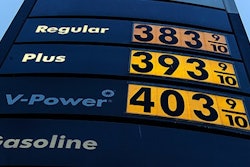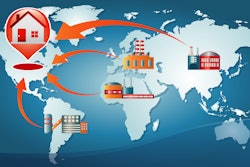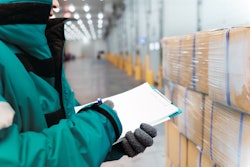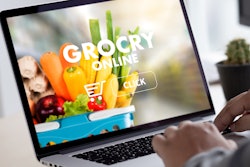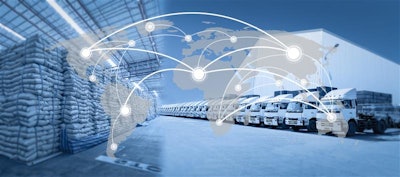
With the pandemic, labor shortages, port congestion and a myriad of disruptions, supply chain visibility has never been more pertinent. Luckily, the need comes at a time where innovative technology is accessible to a resilient and driven supply chain.
From real-time data to Internet of Things (IoT)-based sensors, both companies and consumers can track shipments at every step of the supply chain process. To help decipher and report on the process, companies like MaetaData utilize technology solutions.
“We have our own proprietary data that we provide to others, so we end up being the technology others rely on,” Linda Mallers, CEO and president, MaetaData says. “We provide insight in two ways. One is to provide insights for individual foodservice locations such as schools, universities, hospital systems and workplaces to generate insights by their own definition of local and sustainable supply chains, and the other is to provide identical insights to enterprise clients — foodservice management and distributors — across their organization.”
MaetaData, like most companies, was not immune to the disruptions that plagued the supply chain over the past year. However, the company’s solutions have become more valuable than ever as a transparent supply chain is now an expectation.
“While it has not changed what we do, the pandemic has highlighted what we are doing and our value,” Mallers says. “We are still seeing customers, particularly schools, struggling to get the foods needed to feed students at the most basic level. You are seeing the USDA relaxing nutritional standards, even creating temporary standards, and you are seeing pizza being served when nothing else is available. There are countless stories of foodservice heroes doing what they can to provide lunch. All of this, however, is evidence of the dire need for supply chains to be more diverse, and thereby, more resilient. Relying on one or two suppliers for a product is now seen as a potential risk. This, in turn, creates great opportunity for new, smaller, regional, women- and minority-owned suppliers to enter supply chains that were once closed to them.”
Transportation management systems (TMS) and warehouse management systems (WMS) are also becoming more commonplace in warehouse environments, however additional technologies such as robot operating systems, analytics and navigation will be more prevalent in coming years.
“We can expect the software related to robotics analytics and simulation for utilization and optimization, ROS (robot operating system) and navigation, as more robots (AGV/AMR) and shuttles are expected to be used in the warehouses or dark stores,” says Sunny Mehta, principal consultant at LogisticsIQ, as outlined in this piece of premium content.
According to a survey conducted by Food Logistics and Supply & Demand Chain Executive, the best software to use when first implementing automation is cloud-based software solutions and track and trace.
“Automation is just a big trend right now,” says Rob Wilson, managing director and partner at L.E.K. Consulting. “If you're a grocer, you’ve already had the need to accelerate. This is only further accelerated because long-term labor costs are going to continue to rise and it's just creating more of an incentive for folks to look to automate where possible. You can't always replace people and thank goodness for that, but there are certain things that can be automated. A bolder view from some is that this is going to the model of grocery because grocery is historically operating on razor-thin margins.”
 Unveiling the source of privately labeled products creates a social connection between local or diverse sources and customers.yanadjan/Adobe Stock
Unveiling the source of privately labeled products creates a social connection between local or diverse sources and customers.yanadjan/Adobe Stock
To stay on top of the newest supply chain visibility technology trends, Mallers recommends not getting caught up in hype, but rather to keep reading to stay informed.
“Two years ago, we were invited to the USDA to meet with Secretary Purdue. It was a small group invited to discuss the potential benefits of blockchain in the agricultural supply chain. We were invited because we represent small growers and regional businesses. We have had a patent-pending type of blockchain since we started. It collects data through the chain of custody from farm to customer,” Mallers explains. “Sometimes, solutions don’t need to be as complicated, or as expensive, as one would think to deliver full transparency. Today, headlines are filled with technology trends like blockchain, bitcoin, NFTs and W3, which can intimidate small and regional food producers that make our supply chains diverse. Certainly, precision agricultural solutions are needed to feed our planet at scale, and require very sophisticated innovation and automation, but are not mandatory for all of us. A suggestion would be to keep reading and know the difference between where science is needed versus solid record-keeping that is transparent and visible online.”
The future of supply chain visibility relies on a mix of new technology and regulations. In a transparent supply chain, every business is accounted for from source to distribution.
“The FDA has new Food Safety Modernization Act (FSMA) regulations for food safety that put increased scrutiny on the entire food supply chain,” Mallers says. “A concern we are seeing is how to balance supply chain diversity with new regulations that have high cost and compliance complexity. We are beginning to be called upon to bridge this gap, which is exciting. Solutions can no longer exclude all but large national suppliers, as business is now won and lost in the bidding and RFP process based on the ability to transparently demonstrate support of small, local, MBE/WBE/BIPOC businesses.”
Supply chain visibility has vastly changed the way the cold food chain has approached sourcing, distribution and transportation, and will only grow as more disruptions continue to plague U.S. supply chains.





